First Things First
Have you voted yet? Because if you have the time to read this newsletter but you haven’t bothered to vote, you’re doing it wrong. Go vote! Remember, as long as you are in line when polls close, you will get to vote. So there’s no excuse. Get out there!
But, Also
This is not the most important election of your lifetime. It’s just not. I’m happy to debate what it was—2012? 2000? 1980? But it is simply not credible to argue that this midterm election is more consequential than Donald Trump winning the presidency in 2016 and confirming three justices to the Supreme Court.
Congress hasn’t passed any major policy legislation since 2009. If Dems win, they won’t have votes to end the filibuster. If the GOP wins, they won’t have the White House. And to the folks who tell me that “democracy is on the ballot,” I ask them to look at 2020. The sitting president declared he’d won an election that he had lost and the courts—including all the judges that he had appointed—ruled against him. Surely, that election was more important as well.
And there’s a cost to rhetoric like this.
It raises the temperature and convinces people that they could be justified in taking drastic action to protect against the destruction of their country and danger to their families. In fact, a recent study from the University of California–Davis found that “roughly 5 million Americans would be willing to kill someone to achieve a political purpose. … 19% agreed strongly that violence or force is needed to protect democracy ‘when elected leaders will not.’”
Ignore the Early Vote
Early voting is becoming more common, which means comparing early vote numbers this year to 2018 isn’t helpful. For example, if lots of people who voted on Election Day in 2018 voted early this year, it would look like this year had higher turnout at this point. Ditto trying to read any partisan tea leaves. Democrats are now substantially more likely to vote early. So if there’s a substantial Democratic lead heading into Election Day, it doesn’t tell us anything unless we know whether those voters didn’t turn out to vote in 2018. If they voted early this time but on Election Day last time, then Democrats are just cannibalizing their own vote. (Though, I’d note from an operational standpoint that campaigns still like to see high early vote numbers because then they can concentrate their manpower on Election Day on the fewer remaining voters they need to turn out.)
Breaking News
Philadelphia may have as many as 10,000 votes outstanding after tonight, which could delay results in Pennsylvania’s senate race for days. Why? Because of a Republican lawsuit that demanded the city continue a process called “reconciliation” in which the city checks every in-person vote against the mailed in ballots to ensure there are no duplicates. In the past, this process has flagged anywhere from “a few dozen votes” to … zero duplicate votes. I’ve heard from some GOP voters that these delays “always help Democrats,” implying that some kind of fraud is at work, so it’s worth highlighting that this delay is because of GOP efforts to prevent fraud. Of course, this kind of deduping work can always be done during a recount—so efforts to delay initial election results are all the more frustrating.
Maybe Bad Polls Are Good for Democracy
There are a few theories on why turnout is expected to be very high today. And to clarify, we mean high … for a midterm election. Today’s election won’t have anywhere near the number of voters as 2020, for example. This is part of what makes polling so difficult for midterm elections—the response rate is low but also the pollsters have to guess about who is going to show up to vote. They can ask people and include only those who seem pretty confident they’ll vote. You can poll all voters. You can match numbers with voter files that include past voting behavior. But none of these is going to capture the 2022 electorate perfectly .
But why is turnout continuing to go up? Maybe, as Jonah Goldberg thinks, it means people are deeply unhappy with the current direction of the country and this is actually a sign of severe weakness in our democracy. Similarly, the “this is the most important election of our lifetime” has taken hold once again with people arguing with a straight face that the results of this election will be more impactful than, say, Trump becoming president and appointing three Supreme Court justices.
Mind you, there are two potential outcomes for this election: Democrats retain control of one or both houses without a filibuster-proof majority and without the votes to end the filibuster. Or Republicans gain control of one or both houses but do not control the White House. And I understand some Republicans are running on the fact that the 2020 election was rigged and saying insane things about how Republicans will never lose again if they win. But even if these people win and even if they attempt to change the vote count, they don’t have the last word. The courts will. And remember that those same courts threw out every challenge that Trump brought against the 2020 election results.
I also understand the argument that a GOP win will embolden the Trump wing of the Republican Party, launching him to victory in 2024 and that this election is super important because that election will be super important. Okay, fine. But if you think that the future of the Trump wing of the party is dependent on whether the GOP wins control of the Senate, I’ve got a bridge to sell you. If the GOP loses, Republicans will say the election was rigged and that they lost because their candidates didn’t fully embrace the rigged election rhetoric. If they win, it’s because these were MAGA candidates who prove Trump is the only candidate who can win in 2024. You get it?
So why do I think turnout is up? I actually do think that our democracy has a fever. I don’t know whether it’ll prove fatal. But I don’t think it’s the only reason people are going out to vote in greater numbers. We’ve seen record high turnout since 2016 (2018, 2020, 2021). In all of those elections, the polling was wrong. So cycle after cycle, people have come to rely less on polls to tell them which races are unwinnable. The unreliability of the polls in 2016 has actually incentivized people to vote. In 2014, some of these voters no doubt believed there was no point in voting in a +5 race. But now those same voters quite rationally believe there’s a real chance the polls could be wrong and their vote might count.
Which is all to say, I think unreliable polling is great. I don’t want the polls to be fixed. I think it’s a good thing that people have to vote to see how a race will turn out. It also has the added benefit of cutting down on the pre-mortem takes about why one side lost the election before anyone has even voted.
Depressing Thought
Tim Ryan, the Democratic Senate candidate in Ohio, has worked hard to win Republican and moderate votes in the state. I’ve said before that Ryan overperforming would be a road map for Democrats to defend some of their Senate seats in red states in 2024. But the reverse is also true: If there’s no bump for Ryan—and Vance wins by 8 to 10 points—there’s no benefit to nominating moderate candidates. That, along with tight Senate races in Georgia and Pennsylvania, will mean that candidates don’t matter anymore.
Election Day Operations
There are really three options for tonight: 1) a red wave as expected (a pickup of 15-20 seats for House Republicans), 2) a bigger red wave than expected, cresting in places like Oregon and New York, 3) no red wave, which would mean the polling overcorrected for missing Republican voters, and Democrats keep the Senate.
Scenarios 2 and 3 present a lot of potential problems—mostly in the form of lawsuits that will either allege voter suppression or voter fraud. In both cases, I think the Stacey Abrams 2018 lawsuit in Georgia, which David covered in more depth here, is instructive. Just last month, all of her claims were thrown out by an Obama-appointed judge after a 21-day trial with 50 witnesses that resulted in a thorough, 288-page opinion. But that’s not the point. Abrams was able to raise (and spend) close to $10 million on that one case alone. So the incentives are all on the side of people who bring lawsuits challenging election results.
Regardless, I expect to see a flurry of lawsuits and emergency filings tomorrow. Already, the RNC is boasting that it has filed 73 lawsuits in 20 states just in the run up to today, including one in Pennsylvania in which courts held that undated absentee ballots would not be counted (even if there was a postal service date stamp on the envelope). And this is one of the problems with the partisan divide around early and absentee voting. In previous years, parties might try to target certain areas with lawsuits to keep polling places open later, for example. But if you attacked the voting process, you were as likely to throw out your own votes as theirs. Now, though, both parties know which votes they want to target with these lawsuits. So you’re going to see a lot more Republican lawsuits challenging laws around mail ballots and a lot of Democratic lawsuits over Election Day procedures. Not good, Bob.
Polling Problems and Solutions
The polling problems are partisan. From Nate Cohn at the New York Times: “White registered Democrats were 28 percent likelier to respond to our Senate polls than Republicans — a disparity exceeding that from our pre-election polling in 2020.” If that was the only problem, pollsters could just “reweight” a poll and fix the imbalance. But it’s more than that.
Cohn again: “Biden voters, regardless of their party, were probably likelier to respond than Trump voters. This drove up the Democratic response rate, but it did more than that. It meant there were too many Biden Democrats; too many Biden Republicans; too many Biden independents. Weighting by party wasn’t enough.”
So how do you fix it? Money, of course. There’s a very interesting experiment that just concluded in Wisconsin.
In early September, Ipsos mailed thousands of first-class and priority mail envelopes to Wisconsin households. The mailing included a crisp $5 bill and a letter promising an additional $20 if the respondent took the survey online or filled and returned the enclosed paper questionnaire and return envelope. Responses can arrive until the election, but so far more than 1,500 people responded to the survey.
We don’t have the results yet, but if this solves the partisan/Trump voter response problem, then it could mean a lot more accurate polls. And it’s not clear to me that it’ll raise prices all that much. After all, if the response rate goes up enough, you cut down on a lot of man hours—dialing for hours without finding a single person willing to respond.
Non-Senate Races You May Have Missed
Price put together a non-exhaustive list of some non-Senate races we’ll be watching tonight:
Gubernatorial
A former state legislator once told Price that “governors live in a special psychic place in the minds of voters.” Governors and gubernatorial candidates—especially those who haven’t held federal office—often buck their state’s presidential voting record. Kansas, Louisiana, and Kentucky, for example, are all red states with Democratic governors.
A Republican could win in Oregon. In April, Morning Consult polling found that Democrat and incumbent Oregon Gov. Kate Brown was the most unpopular governor in the country, a reputation that has rubbed off on her party’s nominee to replace her, former statehouse speaker Tina Kotek. And former Democratic state Sen. Betsy Johnson’s independent bid, fueled by frustration around crime and homelessness, could take a bite out of Democrats’ vote share, making things even more challenging for the party.
All that has opened the door for the GOP’s Christine Drazan, a former minority leader in the statehouse, to position herself as the change candidate. As of Monday afternoon, FiveThirtyEight gave Drazan a 45 percent chance of winning the governorship. If successful, she would be the first Republican governor of the state since the 1980s.
A Democrat could win (again) in Kansas. In 2018, Democrat Laura Kelly defeated Republican Kris Kobach to become governor of Kansas. Now she is running for re-election as a self-described “middle-of-the-road” governor with a kitchen table record of balancing the budget, increasing education funding, and (gradually) cutting a food tax. Recent polls have shown her up against her Republican opponent, longtime Kansas Attorney General Derek Schmidt.
Although Kansas made national headlines this summer for the lopsided defeat of a pro-life ballot initiative in the state, abortion hasn’t come up much in the gubernatorial campaign.
A MAGA Republican has an outside shot in New York. The last time a Republican won a governor’s race in New York was 2002, when moderate incumbent George Pataki won re-election to a third term. The GOP’s nominee this year, Rep. Lee Zeldin, is a staunchly conservative Trump ally—quite different from Pataki. But Zeldin’s campaign is hoping disapproval of national and statewide Democrats can propel him to an upset victory over incumbent Gov. Kathy Hochul, who ascended to the position last year after then-Gov. Andrew Cuomo resigned amid a flurry of scandals. Hochul has led in most polls—but narrowly enough that Democrats are taking the race seriously. President Biden and Bill Clinton campaigned with Hochul this past weekend.
House
Most congressional districts aren’t competitive—so the few that are will all be interesting tonight. But here are some highlights:
Maine’s 2nd. Jared Golden was the only House Democrat to oppose the 2021 Build Back Better Act. Will that distinction bolster his moderate credentials enough to withstand a challenge from former Congressman Bruce Poliquin, whom he defeated in 2018?
Michigan’s 3rd, 7th, and 8th. In the 3rd District, Democratic candidate Hillary Scholten has a lot going for her. But if the red wave is big enough, her Trumpy opponent John Gibbs—who defeated Republican impeacher Peter Meijer in August’s primary—could end up winning anyway. Watch the 7th and 8th districts as well, where Democratic incumbents Elissa Slotkin and Dan Kildee are each slightly favored but still vulnerable.
Virginia’s 2nd, 7th, and 10th. Elaine Luria, Abigail Spanberger, and Jennifer Wexton are all known as relatively moderate House Democrats who were swept into office in the 2018 midterms—and it’s conceivable that all three could lose their seats in 2022. After redistricting, Wexton is the safest of the three—but Republicans like their challenger, Vietnamese immigrant and naval veteran Hung Cao.
Alaska’s At-Large. Mary Peltola has held Alaska’s at-large seat for just 11 official business days—but that makes her the incumbent, and she’s done a lot to appeal to Republicans and recently earned a de facto endorsement from Republican Sen. Lisa Murkowski. Amid Republican sniping, Alaska’s ranked-choice voting system could make Peltola the consensus choice.
New York’s 3rd, 4th, 17th, 19th: And keep your eye on those races in New York. It may be some of the first results we get tonight and may tell us how high the red wave could go.
Miscellaneous.
Kentucky abortion initiative. Post-Dobbs, abortion is illegal in Kentucky law with no exceptions for rape or incest. But voters in the state are being asked whether to add a constitutional amendment similar to the one rejected in Kansas that, if passed, would clarify that “nothing in this Constitution shall be construed to secure or protect a right to abortion or require the funding of abortion.”
Arizona secretary of state. In Arizona, election truther and Oath Keeper Mark Finchem hopes to take over the job of managing the state’s elections—and if he can keep his grip on the coattails of Republican gubernatorial candidate Kari Lake and Senate candidate Blake Masters, he just might succeed.
Still Want More?
Audrey spent last week on the trail with Colorado Republican Senate candidate Joe O’Dea, who walks a fine line between touting his independence and alienating Colorado’s GOP base. Eager to avoid any associations with Trump-adjacent figures, O’Dea swats away the comparisons to Colorado’s most recent Republican Sen. Cory Gardner: “I’m not Cory. Cory is not Joe,” O’Dea told her at a campaign stop in Broomfield, Colorado, on Saturday. “I’m gonna be Joe. I’m going to be my own person.” Read it here.
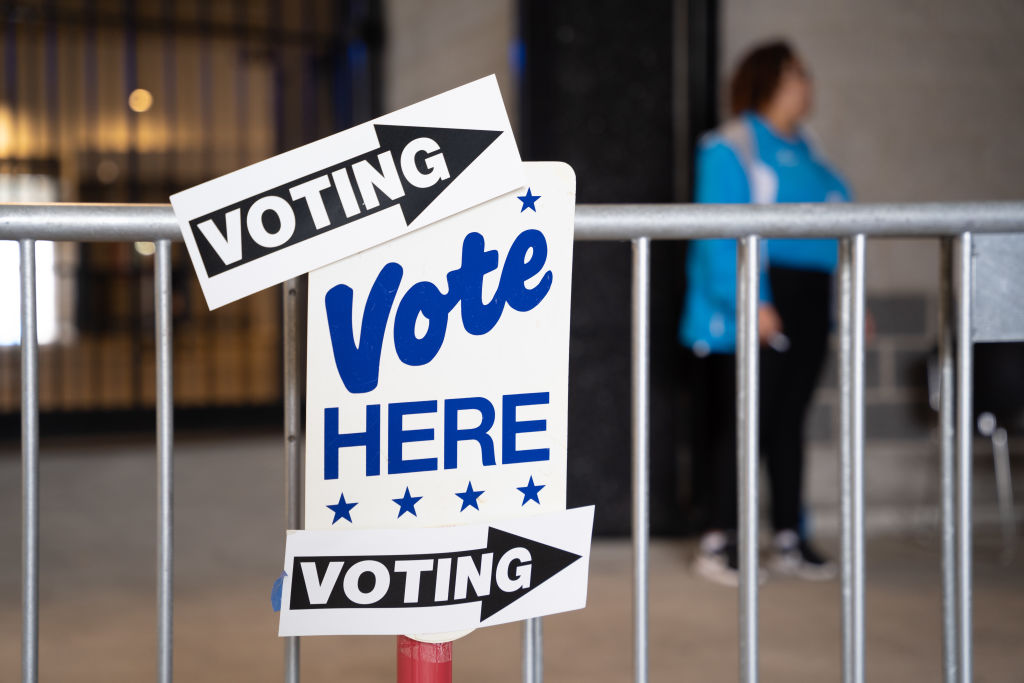



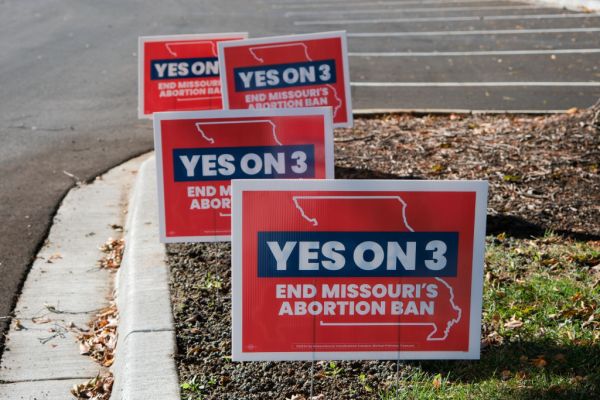
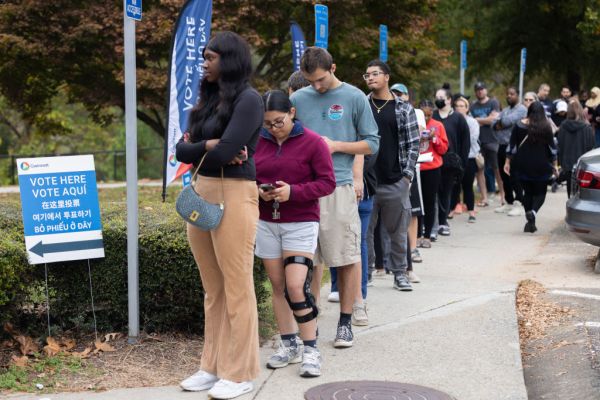
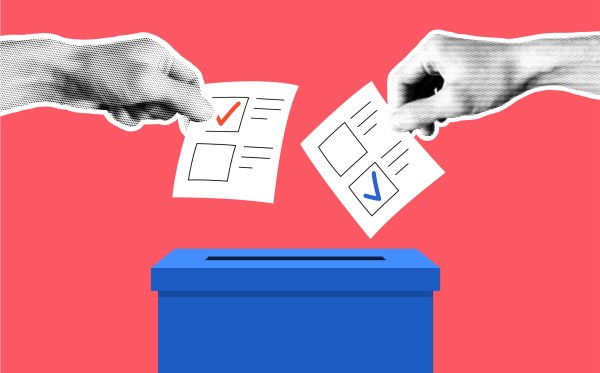



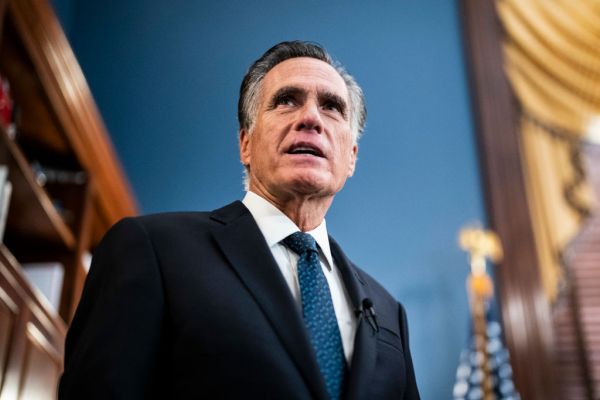
Please note that we at The Dispatch hold ourselves, our work, and our commenters to a higher standard than other places on the internet. We welcome comments that foster genuine debate or discussion—including comments critical of us or our work—but responses that include ad hominem attacks on fellow Dispatch members or are intended to stoke fear and anger may be moderated.
You are currently using a limited time guest pass and do not have access to commenting. Consider subscribing to join the conversation.
With your membership, you only have the ability to comment on The Morning Dispatch articles. Consider upgrading to join the conversation everywhere.